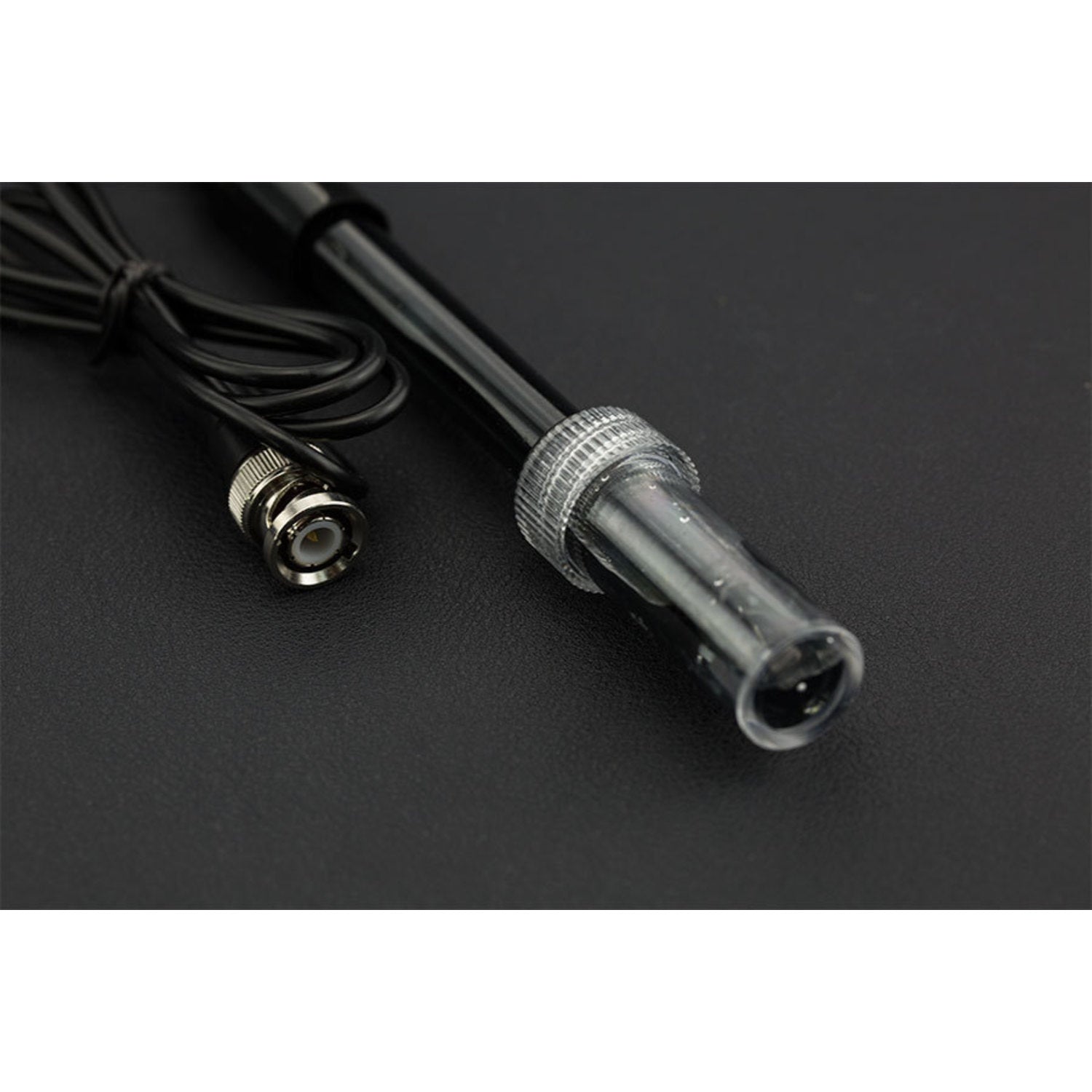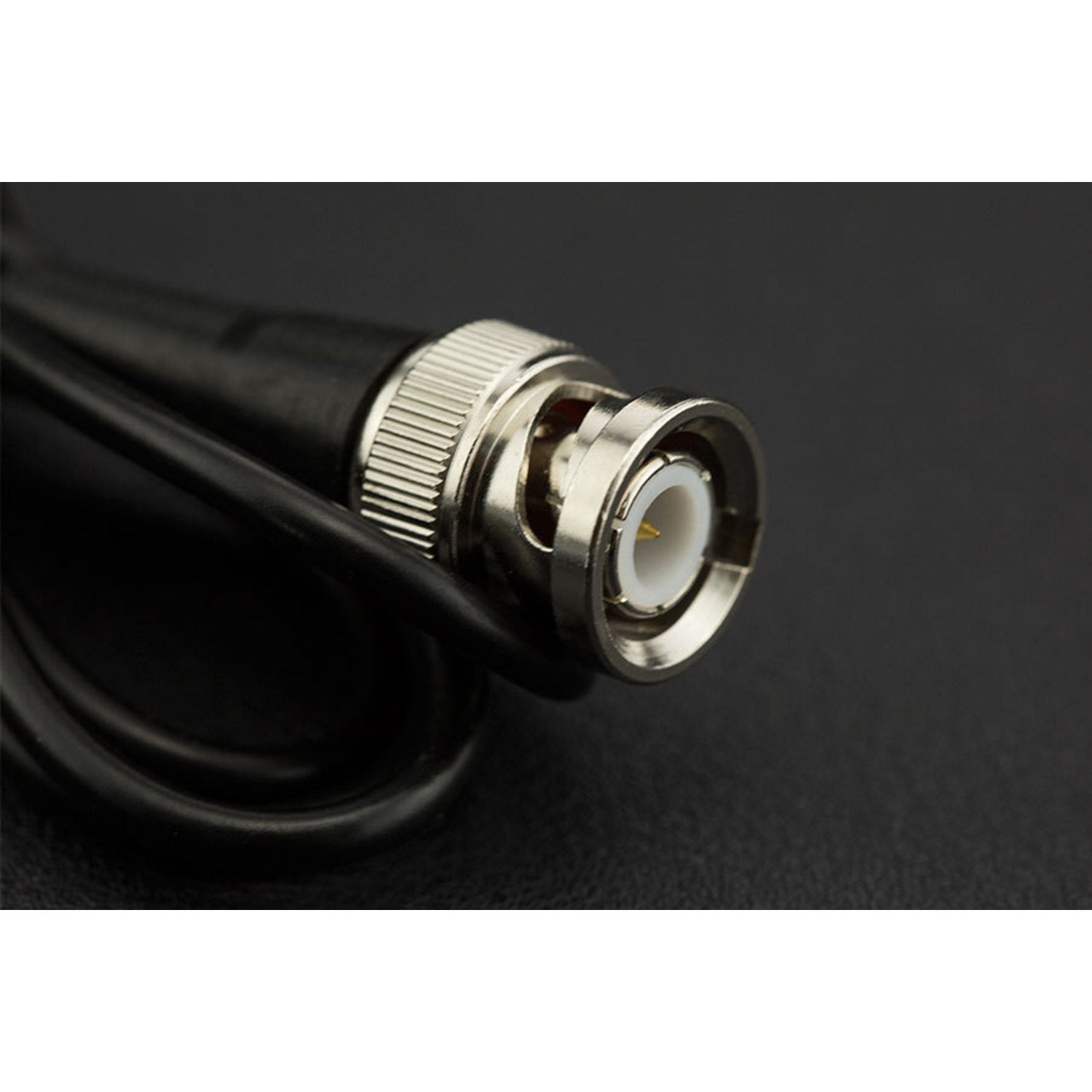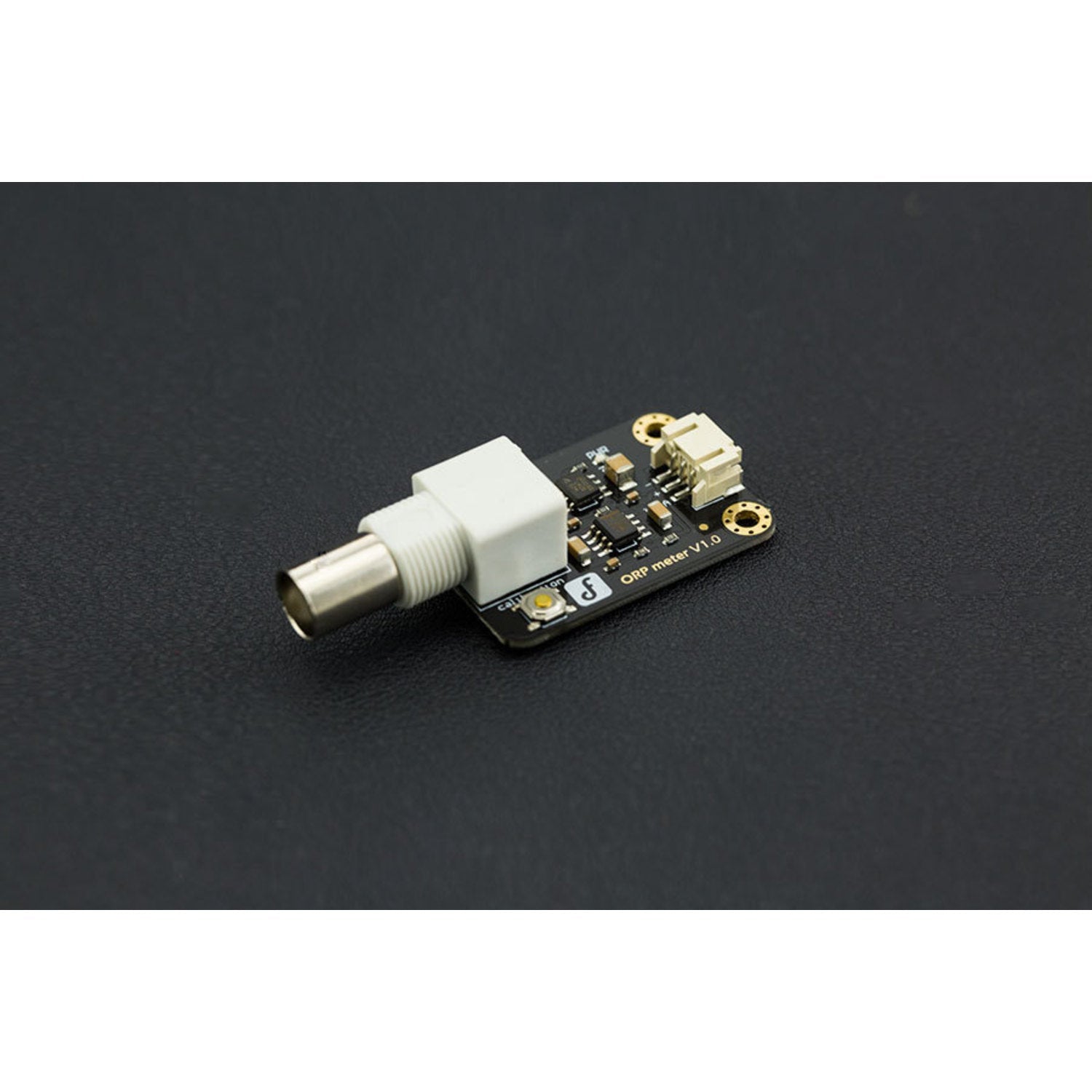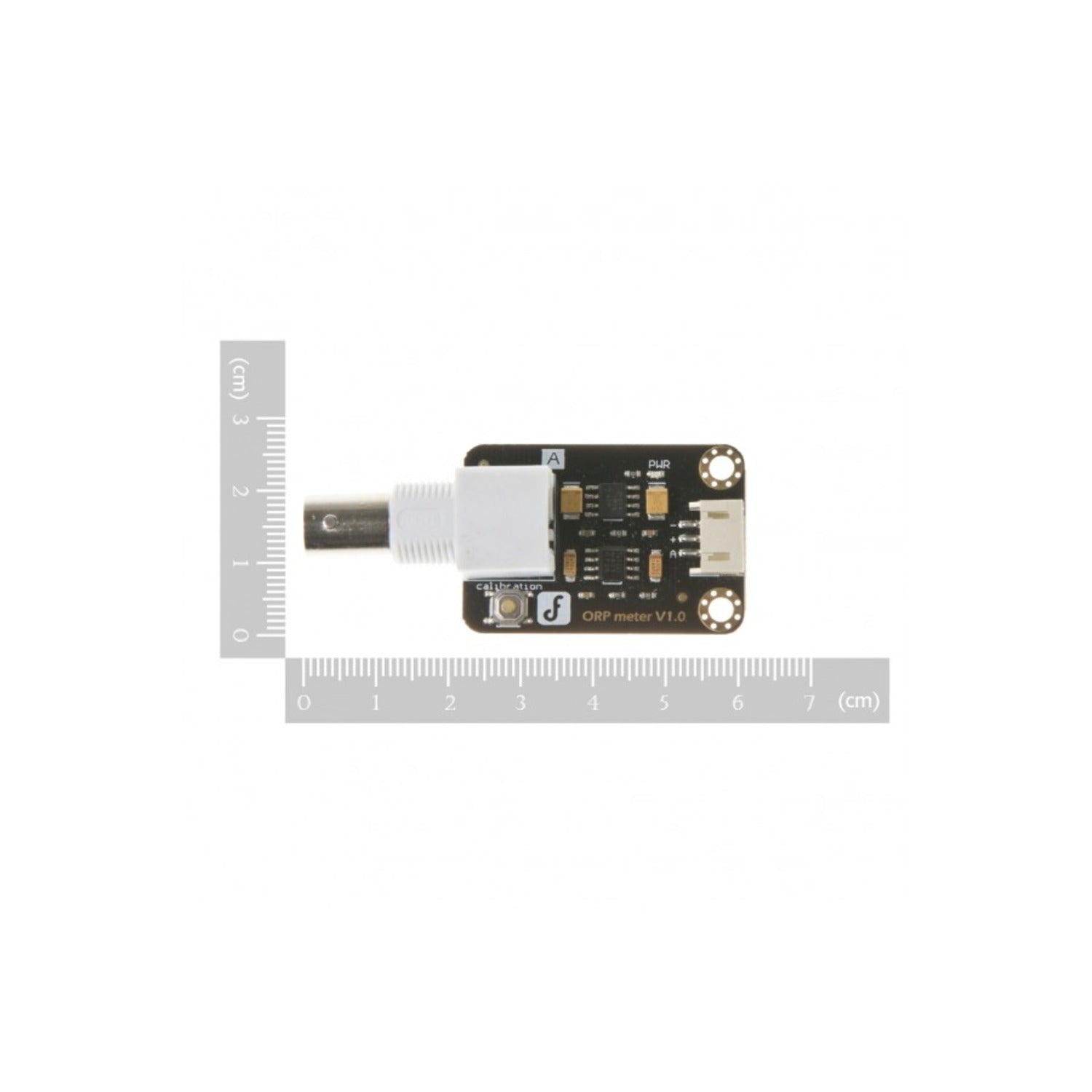In today's world, with a growing focus on health and safety, water treatment has become crucial due to industrial pollution risks. Traditional ORP meters can be hard to obtain and operate, but our Gravity Analog ORP Meter is a game-changer. It's a highly compact ORP monitoring system that seamlessly integrates with your Arduino. This design lets you accurately monitor ORP without adding extra circuitry or components. All you need is simple wiring and basic programming. ORP measures the oxidation and reduction ability of aqueous solutions. Unlike pH measurements that need frequent calibration, ORP has a linear relationship and mainly requires electrode maintenance. It's a reliable way to measure water quality, giving you a single value regardless of the product or treatment used. Applications include water quality testing, aquaculture, marine science, hydroponic gardening, and general chemistry. Specifications: Module power is +5.00V, size is 40mmX27mm (1.57'x1.06'), measuring range is -2000mV - 2000mV, suitable temperature is 5 - 70°C, accuracy is ±10mv at 25 °C, response time is ≤20sec. It comes with an ORP probe with BNC connector, PH2.0 interface (3 foot patch), zero calibration button, and power indicator LED. Documents include product WiKi, schematic, ORP Meter PCB Layout, Arduino sample code, and ORP Composite Electrode Manual. Shipping list includes 1 ORP probe (BNC connector), 1 ORP probe circuit board, and 1 analog cable.




Using your Gravity Analog ORP Meter for Arduino is a breeze. First, connect the ORP probe with the BNC connector to the meter. Then, use the provided analog cable to link it to your Arduino. After that, follow the simple wiring instructions and use the Arduino sample code to start monitoring ORP. When using the meter, make sure the temperature is within the 5 - 70°C range for accurate readings. If you need to calibrate, use the zero calibration button. For maintenance, regularly check the electrode. Since ORP measurement mainly needs electrode maintenance, keep it clean and in good condition. Store the meter in a dry place when not in use. And don't forget to refer to the ORP Composite Electrode Manual for more detailed information about the electrode.